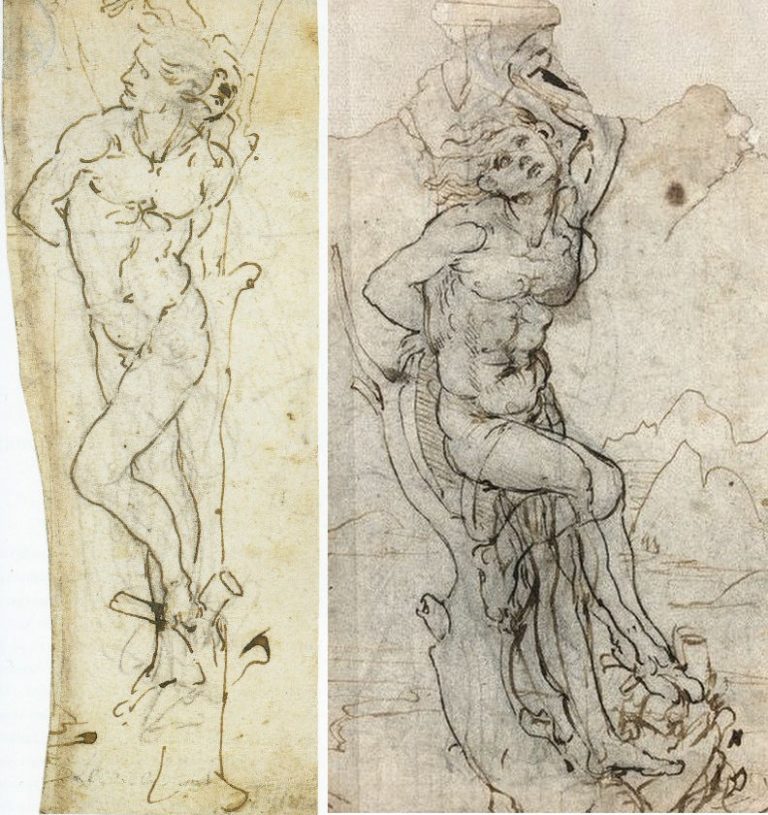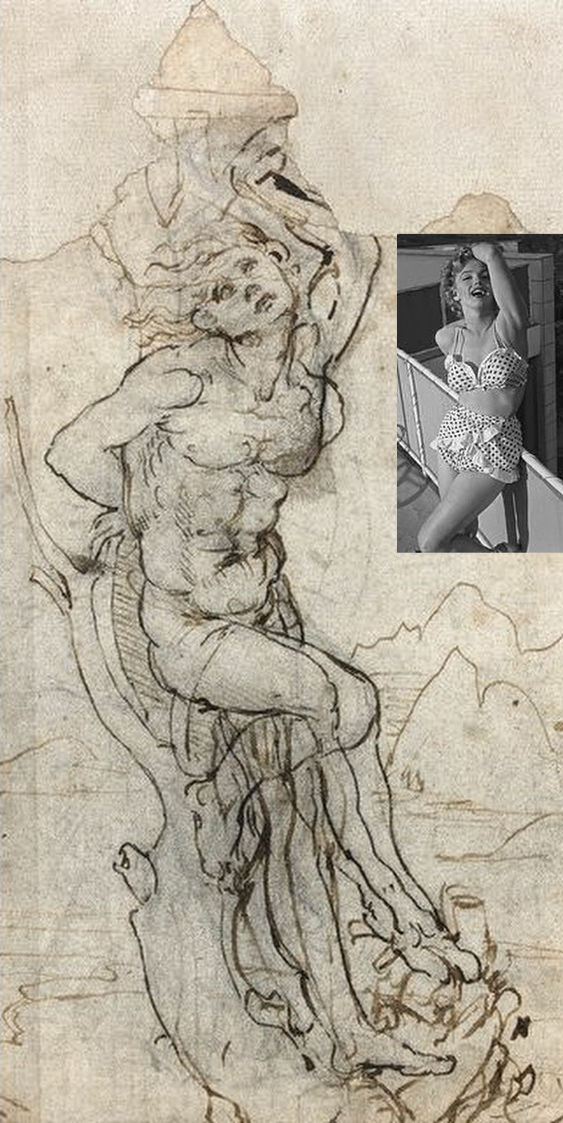Two troubled Leonardos
Two supposed Leonardos are now in difficulties. The Salvator Mundi, sold for half a billion dollars just over a year ago, hasn’t been seen since. In France, the Saint Sebastian drawing saved for the nation was not bought and has now been put back on the international market.
In the Guardian today (“An £18m saint…but is Sebastian drawing really by Leonardo?”) Dalya Alberge reports that the Leonardo scholar Martin Landrus believes the recently discovered and attributed ink drawing of a Saint Sebastian that is being offered by the Tajan auction house is not entirely – or, rather, is mostly not by Leonardo. Dr. Landrus was struck by poor ink drawing “nervously traced” over “much lighter lines that may have been autograph”. Possibly so, but ink lines studiously executed over faint guidelines made in erasable materials like chalk, charcoal or pencil in what would appear to be a quickly executed inventive study (as opposed to a drawing made from an already posed life model) are also encountered in pastiche inventions made by third parties.
The possibility should also be considered that this newly-emerged Saint Sebastian (above right) is a “portmanteau” drawing composed from elements borrowed or adapted from bona fide Leonardo drawings such as the Saint Sebastian ink study (above left) in the Hamburger Kuntshalle. In questions of attribution, differences or inconsistencies weigh more heavily than similarities and correspondances. Both drawings above are made of ink over fainter drawing. Both are of Saint Sebastian tied to a tree. However, notwithstanding the subject’s extreme plight, the Hamburg figure is a clear adaptation of a classical figure: the raised shoulder is placed above a stretched torso contour, while the lower shoulder is placed above a raised hip with the inescapable consequence that the torso’s contour is compressed and bunched (see the comparison with a real figure below). Throughout the Hamburg drawing the lines are spare, elegant and sometimes almost notational – see the way the centre line that begins under the rib cage shifts into alignment with the plane of the abdomen which is set in opposition to that of the chest. There is no such clarity and figural acuity in the newly-emerged drawing even though it contains considerably more drawn marks. Where the Hamburg drawing has three differently placed heads (two inked and one in chalk or pencil) all are individually compatible with the body, while in the Tajan auction house drawing the single head is snapped and twisted back in almost broken fashion and there are two radically conflicting poses in the torso below it. In one of these both arms are tied behind the tree in a manner that leaves the true left shoulder dropped below that of the right. In the alternative version the situation is reversed: the true left arm has been pulled up as if tied to a higher branch but this dramatic change of design and anatomical orientation carries no consequences for the rest of the figure: the abdomen remains untidily anatomically bunched. The true left breast remains dropped below that of the right, even though the true left shoulder has been rotated both upwards and backwards. It is hard to believe that so great a draughtsman as Leonardo could have confined such a radical shift of positioning to a single discrete part of a figure. As well as anyone Leonardo understood the manner in which bodies combine “architectural” structures with fluidity, mobility and grace. By contrast, it is easy to imagine how someone wishing simply to compose a study in the manner and style of a Leonardo sketch/design might commit such solecisms.
(For discussion of the rising tide of discovered works by great old masters, see our 15 December 2016 post “Leonardo and the Growing Sleeper Crisis”.)
Michael Daley, 17 November 2018




Leave a Reply